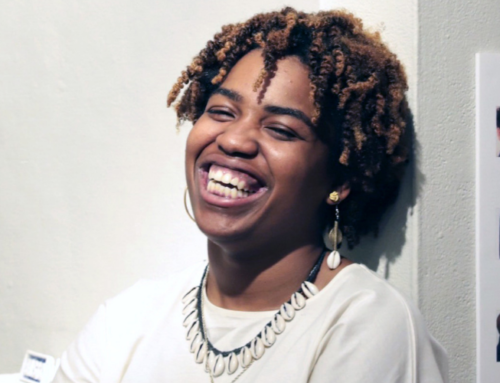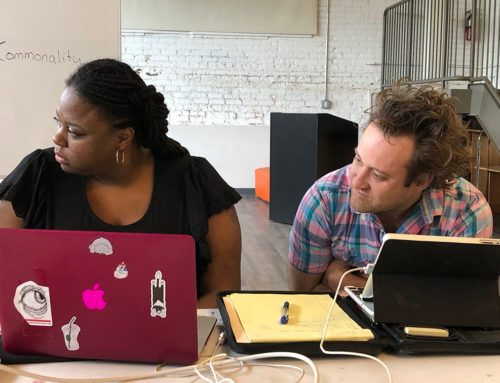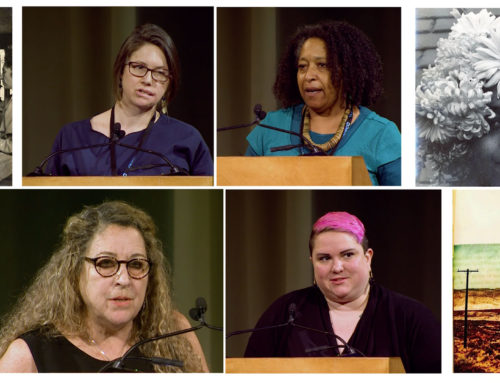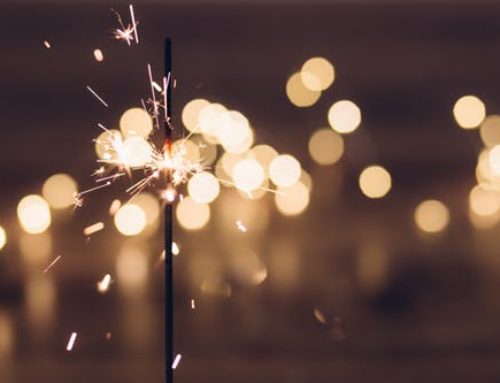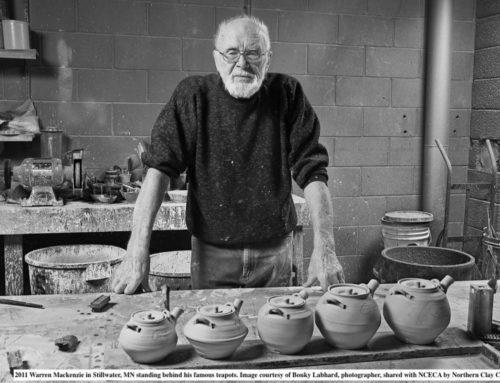Born on November 19, 1942 in Cincinnati to Richard Walter and Evelyn (Crosby) Hay, Dick Hay earned his Bachelor of Fine Arts at Ohio University (1964) and his Master of Fine Arts at the New York State College of Ceramics of Alfred University (1966). In a 2008 interview with Terre Haute, Indiana’s Tribune-Star, Hay, who was raised in Cincinnati and Maine, reflected, “My parents got me started in art quite simply … They gave me a box of crayons, and I’ve never stopped making art. Fortunately, they never tried to discipline my inclinations, get me to be like everybody else — repressed.”
Around 1970, Hay was one of four artists included in the “Indiana Ceramics” exhibition at DePauw University’s Emison Art Center. Other young ceramists included: Dan Engelke, John Goodheart, and David Herrold. The exhibition marked an early representation of works in clay incorporating topically controversial imagery and collectively, the artists speculated about where ceramics might be heading as a medium to confront challenging issues. Collectively, artists were part of a movement to de-emphasize traditional craft skills and challenge limitations of the humble vessel that had been an accepted dictum of studio ceramics through the 1960s.
Dick recruited me to Indiana State as a graduate student before the MFA program actually existed. – Lenny Dowhie
In a 1971 exhibition, Clayworks: 20 Americans, at the Museum of Contemporary Crafts in New York, works from Hay’s Form over Function series articulated complex commentary on wrongful assignations of power and value in consumer culture, visually trapping elements beneath the violently, sprung clamp of a mousetrap. Hay’s work encouraged viewers to critically question the bedrock societal values of their era. Deeper investigations of the vessel form, sculptural abstraction, and the relationship of drawn surface to three-dimensional form followed. His stoneware sculpture, 1200, received the grand prize in Objects and Crafts 1975, exhibited at the Indianapolis Museum of Art.
Internationally active as an artist and through his leadership in the field, Hay lectured at more than 80 universities worldwide, and he served as president of the National Council on Education for the Ceramic Arts (1978-80). After 40 years of teaching, in 2006, Hay retired from active teaching at Indiana State University and became a Professor Emeritus of Art. He received the Caleb Mills Award for Distinguished Teaching from Indiana State University (1988). He was also awarded a Teaching Fellow by the Center for Teaching and Learning, Indiana State University. He received the ‘Excellence in Teaching Award’ from the National Council on Education for the Ceramic Arts’ at their annual conference in San Diego, California (2003). Previously, Hay had been named Fellowship of the Council by NCECA for his service to the organization. In 2010, a documentary film was made on his life titled Dick Hay: Artist, Teacher, and Mentor, produced by NCECA and directed by Judy Kelly Productions.
As a former Executive Council member of NCECA, I felt it was my duty to always check with past board members and presidents on current issues before the Board of Directors. Dick was always on my call list. The stories of former NCECA Boards and the positions that boards from the past took to bring NCECA to the present were fun and informative. Dick had great friendships and a great life and was respected by all. – Dan Hammett
Hay exhibited his work in over two-hundred exhibitions in the United States, Japan, Canada, Russia, Latvia, and Korea. He has been part of numerous invitational exhibitions, including: Heroes and Icons, Modern Art Museum of Fort Worth, Texas; Three Living Legends in Art, Sisson Gallery, Dearborn, Michigan; and Twenty American Artists, American Art Museum, New York, New York. His work is in major collections throughout the world, including: Pushkin Museum, in Russia; the Riga Museum of Art, in Latvia; the Byung-Tak Woo Public Collection, in Korea; the Sea of Japan Collection, in Japan; and The Butler Institute of American Art, in the United States.
In a 2014 update to his website, Hay wrote, “I can only add… I have been very fortunate in this journey. I don’t think that I have ever had a life’s plan. And I don’t think that I have asked for much. But I have received more than I could have ever envisioned. It has not been a one-hundred percent positive life. But it has been real close. And now. As a retired person. My life is truly different. I was cursed/blessed to express myself through making objects. And I feel obligated/driven/doomed/guilty if I don’t do this daily. I now work in my studio every day. Maybe for an hour. Maybe for twelve hours.”
I met Dick Hay in 1972 when he was doing a workshop at Arizona State University. I was taking ceramics as a post grad with a degree emphasizing Sociology and was not an art major. He saw my experiments with airbrushing clay and called my instructor and offered me a full ride scholarship to come and study with him at Indiana State University mostly because he wanted to learn how to airbrush. Of course, I accepted. What he DIDN’T tell me was that ISU did not actually have the MFA program approved yet, and as such, I was their “test case.” Thus I became ISU’s and Dick’s first MFA graduate. We knew the campus was in Terre Haute but Dick neglected to tell us that there was also a smaller village known as West Terre Haute, which was very, very rural. After driving around and around looking for anything resembling a campus, I finally stopped in a tavern and asked the patrons where the campus was. After the laughter died down, I realized I was lost, so I called Dick who, after his laughter died down, told me I was still five miles away but I was welcome to stay in WTH. We made it to Terre Haute just in time to secure a motel room in the very motel the police later arrested a murder suspect. Such was my initiation to graduate school, Terre haute and Dick Hay. – Lenny Dowhie
Dick Hay is survived by his partner Pauline Butler, a sister Karen Van De Walle, his son and daughter-in-law Richard, Jr. and Carla Hay, and grandchildren Joshua and Savannah. The family requests letters including memories of Dick to share with his grandchildren so that they may know their grandfather better as they age. Letters can be sent in his name to French Funeral Home, 421 E. National Ave., Brazil, IN 47813 or via the contact page of their website.


